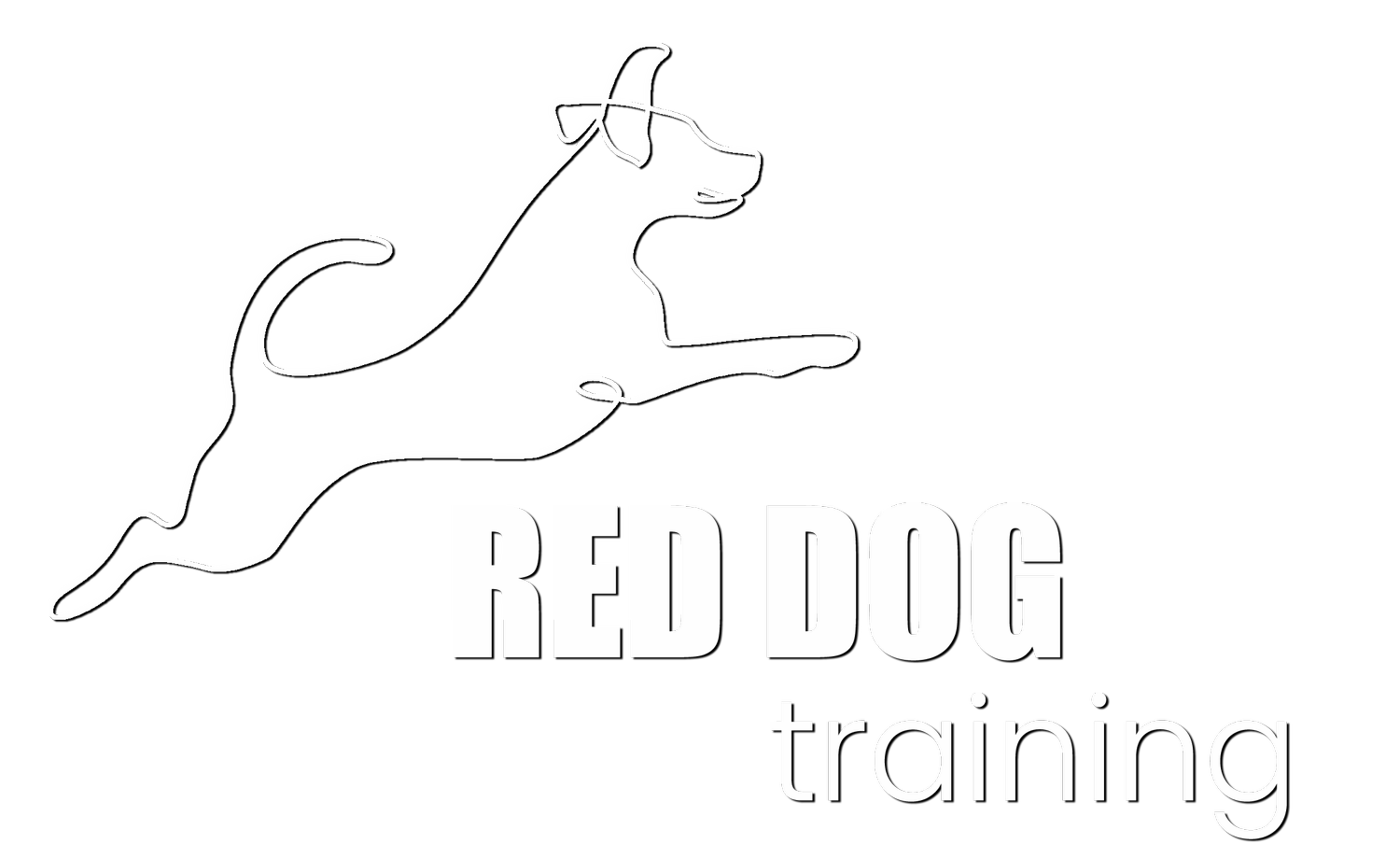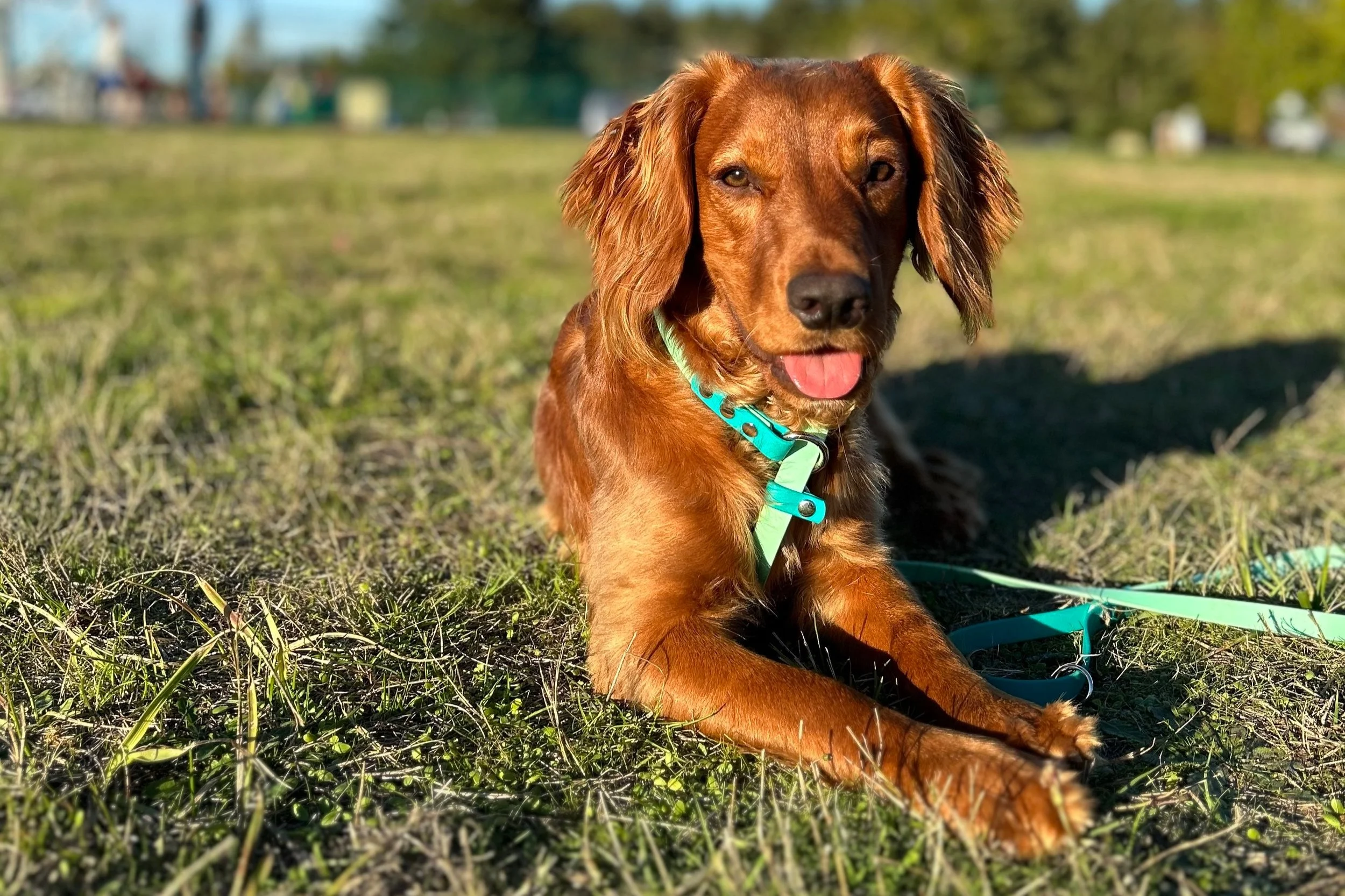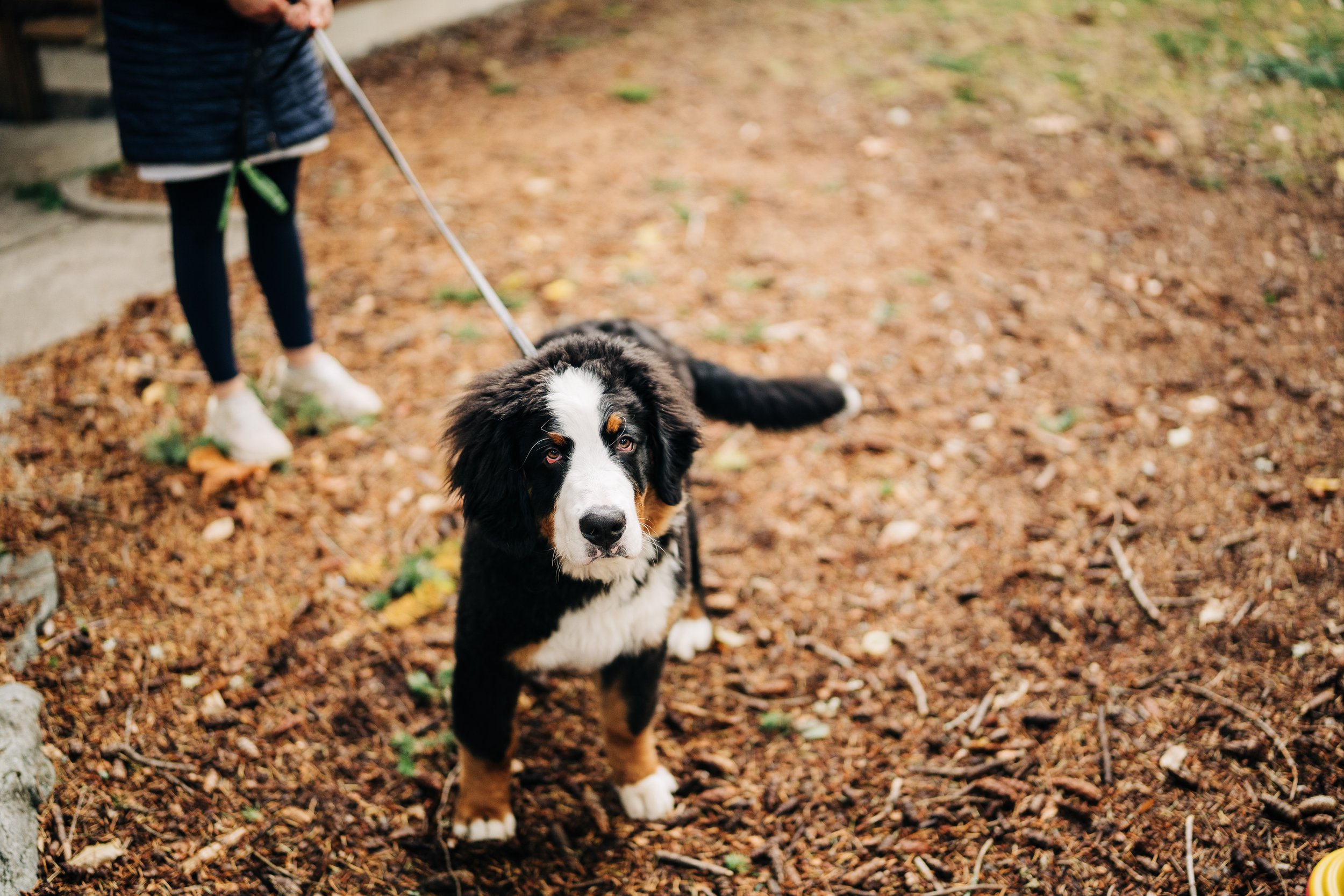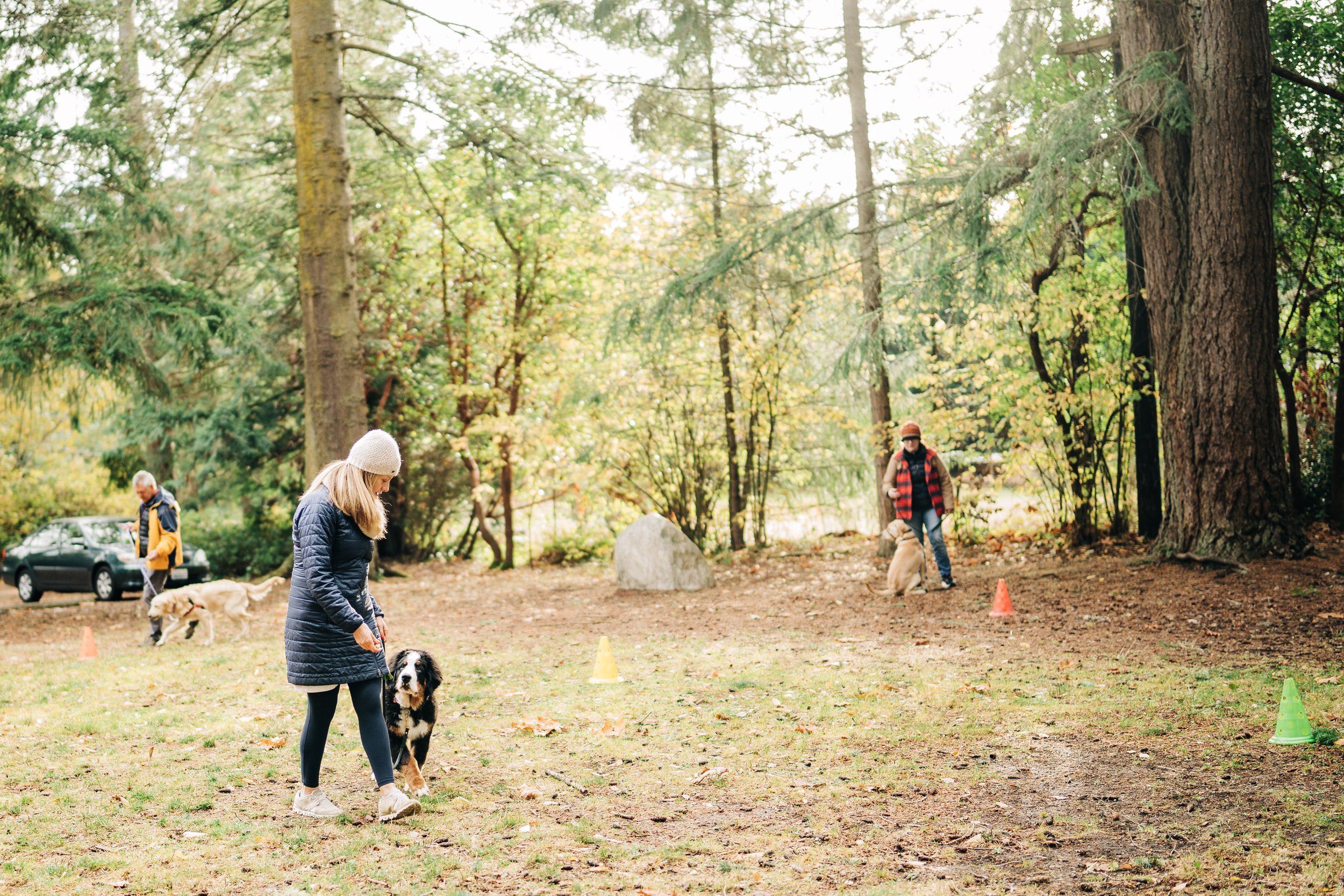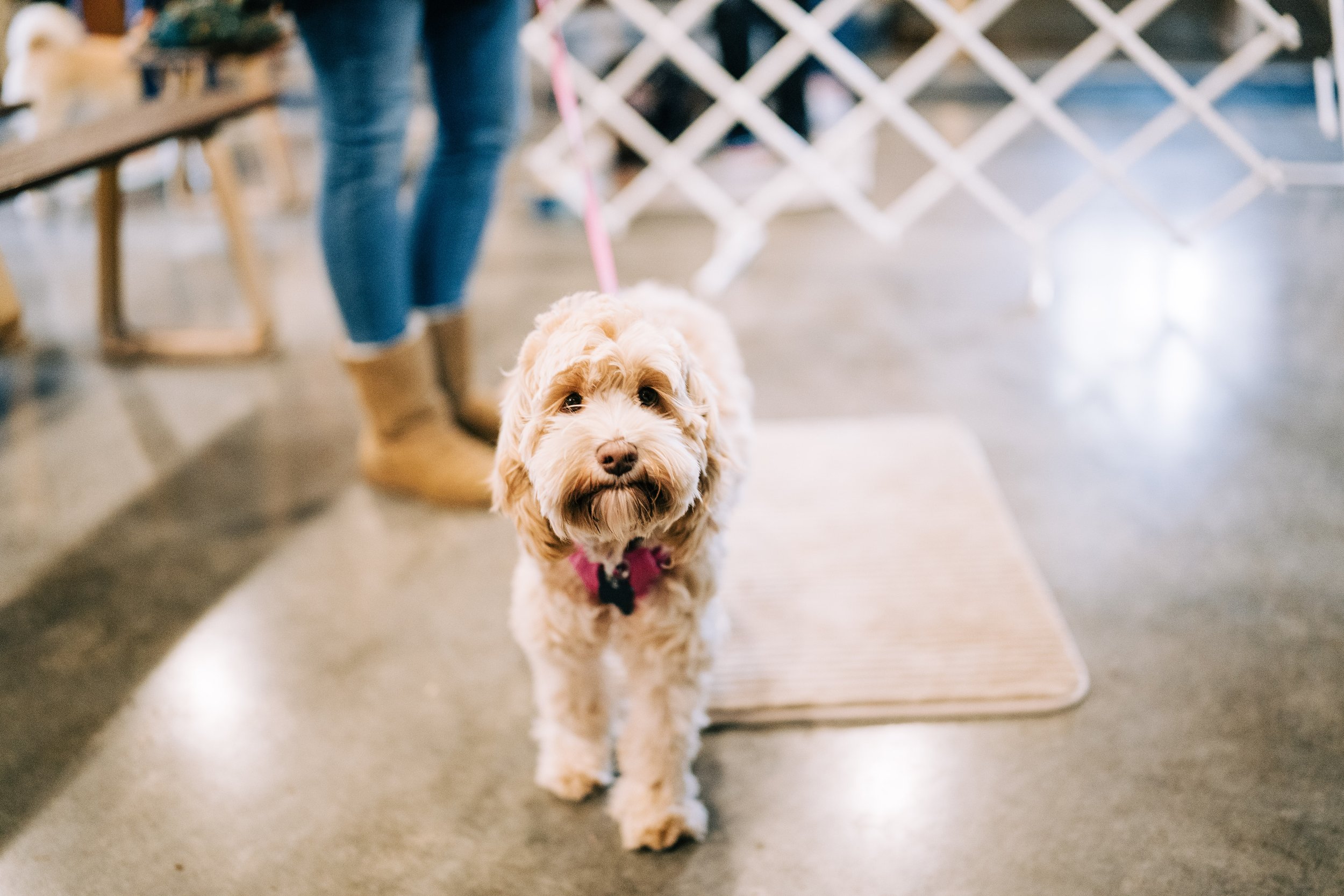
play.reward.repeat.
Check list:
For Excitable, Anxious, or Reactive Dogs
In this document, we will be discussing daily management and enrichment for your dog. It can be incredibly difficult to navigate the best way to help your dog when they are also struggling with unwanted behaviors. The goal of this checklist is to make sure your dog’s daily needs are being met so that training can progress quickly and with the highest rate of success.
How much is your dog sleeping or resting?
Dogs need approximately 17-20 hours of rest per day. If your dog is not able to relax when loose in the house, crating provides a way for dogs to settle quicker and easier. Tether training also helps dogs learn to relax when outside the crate. If your dog is jumping at every little nose or movement, they are not resting. Long term learning cannot take place in a state of exhaustion. When dogs are over-tired, it rarely translates into sleepiness. It often presents as behavior problems such as reactivity, anxiety, nipping/biting, or destructive behavior. If your dog is not crate trained, click HERE for an online class to get you started.
Is your dog rehearsing reactive behavior?
Does your dog charge your fence line and bark at cars, other dogs, or people? Does your dog charge your door and bark at delivery drivers or guests? These behaviors need to be prevented BEFORE they happen. Punishment or redirection AFTER the behavior has already happened will not produce better long term behaviors. When trying to create new behavior patterns, we cannot allow a dog to continue to rehearse unwanted behaviors. Crating your dog when you are not home is a great way to manage unwanted behaviors. When you are home, tether training in the house prevents your dog from charging the door. Amazon provides notices when they are on the way so you can be prepared and set your dog up for sucess. Window tinting is another effective way to keep hypervigilant dogs from obsessing about the outside world. Supervising your dog in the yard can prevent fence fighting/frustration. When reactions occur, your dog’s body is flooded with adrenaline and cortisol. Did you know that it can take up to 6 days for your dog’s body to regulate back to normal? Each new reaction sets that clock back. We cannot ask the dog to make good choices or learn new skills until they have decompressed from the stress hormones ravaging their system. Owners need to actively work on decompression protocols before their first day of training so we can be successful. For more information on how stress hormones impact behavior and training, click HERE .
How is your dog decompressing?
Crating is a wonderful tool to use for decompression but it only works for “down time”. What about active time? Sniffing, running, and play (with you) are the preferred options. At a bare minimum, all dogs need 30 minutes of autonomous motion daily where they get free choice and are not attached to a leash. Some dogs will choose to run, some will sniff, and some will chase squirrels or a ball. Whatever they choose, it needs to be done in a way that avoids practicing reactive behavior and is safe for you and your dog. This might mean building a solid wood fence that visually blocks out triggers. It could mean using sniffspots or even neighborhood off leash areas at odd times so you are the only one there. If you have a lower energy dog, a harness and long line can be used when needed but shouldn’t replace free motion all together. If you have an extremely reactive or dangerous dog, your best case scenerio might be a home treadmill to burn off excess adrenaline and provide exercise and stimulation. But please, avoid situations where reactive behavior can be practiced or rehearsed at all costs. Once we being formal training, we will slowly introduce triggers in a structured way to build new positive associations and behaviors. Before formal training can be started, the only goal is decompression.
How are you building your relationship with your dog?
This might seem like a dumb question. You house your dog, love your dog, feed your dog, provide vet care for your dog, isn’t that enough?! Sometimes. But if you are struggling, then no, it’s not enough. The way I like to describe a relationship between dog and handler is a simple situational test. If you were in an open field and you unleashed your dog, what would they do? Would they want to hang out near you? Maybe sniff and explore but periodically check in? Or would they bolt? Would they run away from you when you call them? Recalls are rarely a training issue, it’s a relationship issue. What have you done to show your dog that you are super fun and awesome person to be around? Or on the other end of the spectrum, what have you done to show that you are unpredictable and sometimes get upset for unknown reasons? Dogs more often than not do not connect a punishment to a behavior. A punishment doesn’t have to be extreme. Many dogs find just a harsh tone to be very unpleasant and instead of avoiding the unwanted behavior, all they are learning is to avoid you. Having a positive relationship with your dog will make or break your training progression and overall success. The best way to build a relationship with your dog is to be fun! Play! Be silly! Build new skills using positive reinforcement training. Start hand feeding 1 or more of their meals a day. Give your dog lots of easy wins and be generous with your rewards. And to tie back into the beginning, prevent unwanted behavior before it happens. Do not be the “scary” or “unpredictable” person in your dog’s life who gets angry when your dog makes poor choices. Be the safe, the reliable, and the fun person who offers security and fulfillment.
What expectations and experiences are you providing to your dog?
There are 2 things I tell my students to throw in the garbage when in training:
1. Doggy day cares
2. Structured leash walks
Both create more problems than they solve but for different reasons.
Doggy Daycares expose your dog to a slew of unwanted experiences. It puts dogs in an extreme state of over-arousal and it teaches your dog any unknown dog will invade their space. It often gives more negative experiences around other dogs than positive ones and play is prioritized over neutrality. I very commonly see explosive reactive behavior form doggy day care participants when placed on a leash around other dogs. These dogs have learned that other dogs make them uncomfortable over and over again, that people just let it happen, and that when the freedom of flight is taken away when restrained on a leash, fight is the only option left. While the concept of doggy daycares comes from a good place, they more often than not do not provide the good experiences we are hoping for. I do not believe these facilities are all bad but I do believe you need to choose the expectations and experiences you give your dog. You need to choose between daycare environments and giving your dog the freedom to flee (which means an off leash life and this dog does not access public spaces) or choose a dog who can be comfortable and confident on a leash and neutrality around other dogs is the primary focus. While there are unicorns out there that can easily transition between both situations, they are unicorns and are not the norm.
The second experience that doesn’t provide your dog with much benefit is structured leash walks. It more often than not is just a big exercise in frustration between dog and handler. “DON’T PULL” “DON’T JUMP ON THAT PERSON” “DON’T BARK AT THAT DOG” “DON’T CHASE THE SQUIRREL” “DON’T SNIFF THAT BUSH” When the walk is over you are exhausted and your dog is buzzing. We expect them to be satisfied and happy and they are still bouncing off the walls. “But you got a walk! Why aren’t you tired?” Walks are for us. If you are one of those lucky individuals who can easily walk your dog everywhere and they are totally fine, good for you but I’m assuming things are a little hard and messy right now if you are reading this. Your dog does not need daily structured walks. I’m going to say this again, your dog does not need daily structured walks. “But I like walking, I got a dog to walk with me.” That’s awesome! I would love to get you there, but not yet. If you find your dog is a heavy puller or reactive to different environmental triggers, structured walks need to be put on hold until new behaviors can be built.
This is just the beginning
I’m not saying this to overwhelm you, just as a reminder we all start somewhere. Many of my clients get quite overwhelmed when discussing the topic of management in a training plan. I always remind my students: you are overwhelmed because you are thinking you are doing all of these thing on top of what you are doing now not in replace of what you are doing now. I guarentee the structure I outlined above is easier than living in a world where you are reacting to your dogs unwanted behaviors and bearing the emotional toll it has on you and your household. It can be quite tramatizing to us as humans having the “bad dog.” There is an immense amount of shame and guilt brought on by those around us. Let’s not even get started on social media and the mental effects it has on society! I hope this outline gives you the hope that things can and will get better as well as a starting point on things you can do NOW that can make a huge impact on your dog’s daily life.
